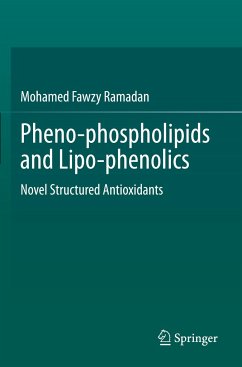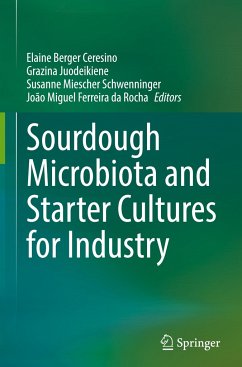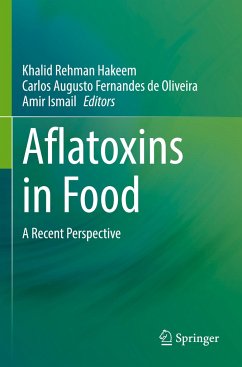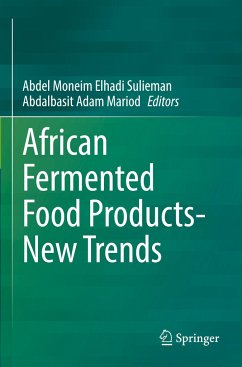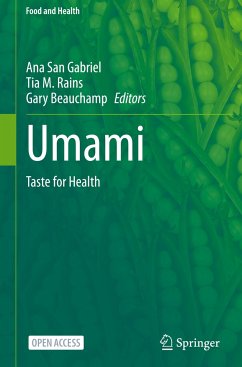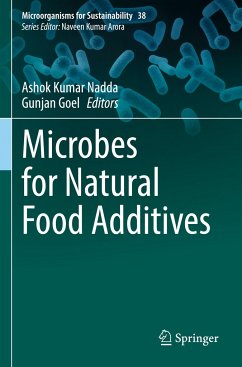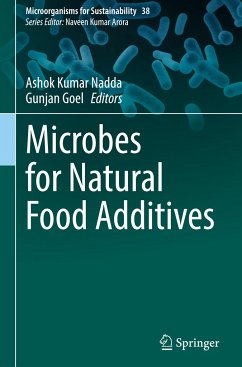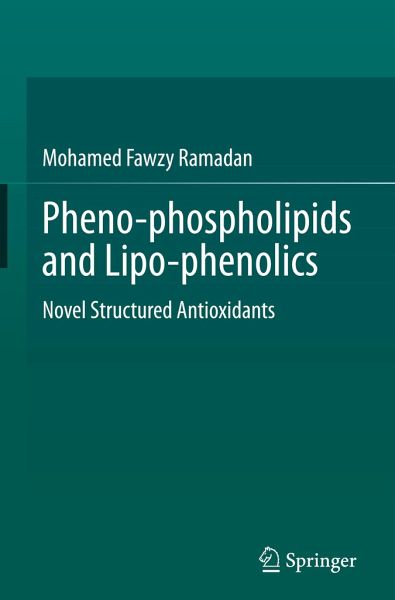
Pheno-phospholipids and Lipo-phenolics
Novel Structured Antioxidants
Versandkostenfrei!
Versandfertig in 6-10 Tagen
76,99 €
inkl. MwSt.
Weitere Ausgaben:

PAYBACK Punkte
38 °P sammeln!
Natural phenolics are powerful bioactive compounds, but their use as antioxidant agents in lipid-based foodstuffs and cosmetics is limited due to their hydrophilic traits. A promising technique to overcome low solubility of phenolics is to increase their hydrophobicity by grafting with lipophilic moiety to form lipid-enriched phenolics (lipo-phenolics). Another way to enhance the amphiphilic traits of phenolics is by lipophilization with phospholipids in a suitable solvent to form phenolics-enriched phospholipids (pheno-phospholipids). Both functionalized phenolics (phenolipids) exhibit high b...
Natural phenolics are powerful bioactive compounds, but their use as antioxidant agents in lipid-based foodstuffs and cosmetics is limited due to their hydrophilic traits. A promising technique to overcome low solubility of phenolics is to increase their hydrophobicity by grafting with lipophilic moiety to form lipid-enriched phenolics (lipo-phenolics). Another way to enhance the amphiphilic traits of phenolics is by lipophilization with phospholipids in a suitable solvent to form phenolics-enriched phospholipids (pheno-phospholipids). Both functionalized phenolics (phenolipids) exhibit high bioavailability and antioxidative potential.
Functional phenolics-enriched phospholipids (pheno-phospholipids) play an important role in enhancing the functional properties of both phenolic compounds and phospholipids in food for their use in nutrition and health. Phenolipids have also found applications on an industrial scale, likely due to low costs, the availability of starting materialand safety. Recent advances in the field of lipophilization allow accessing molecules with high potency and targeted action covering a wide spectrum of bioactivities. Owing to their cost and availability, phenolipids find applications in niche sectors such as cosmetics and pharmaceutics as well as in the novel food.
This book reports on the chemistry, preparation, and functionality of lipid-enriched phenolics (lipo-phenolics), broadening their applications in food, pharmaceuticals and cosmetics. The strategies of the lipophilization of phenolics, the effect of modification on the biological properties and potential applications of the resulting lipo-phenolics are reviewed. The text also discusses the preparation, physicochemical characteristics and functional properties of phenolipids and phytosomes, including the latest developments and their current industrial status.
Functional phenolics-enriched phospholipids (pheno-phospholipids) play an important role in enhancing the functional properties of both phenolic compounds and phospholipids in food for their use in nutrition and health. Phenolipids have also found applications on an industrial scale, likely due to low costs, the availability of starting materialand safety. Recent advances in the field of lipophilization allow accessing molecules with high potency and targeted action covering a wide spectrum of bioactivities. Owing to their cost and availability, phenolipids find applications in niche sectors such as cosmetics and pharmaceutics as well as in the novel food.
This book reports on the chemistry, preparation, and functionality of lipid-enriched phenolics (lipo-phenolics), broadening their applications in food, pharmaceuticals and cosmetics. The strategies of the lipophilization of phenolics, the effect of modification on the biological properties and potential applications of the resulting lipo-phenolics are reviewed. The text also discusses the preparation, physicochemical characteristics and functional properties of phenolipids and phytosomes, including the latest developments and their current industrial status.



